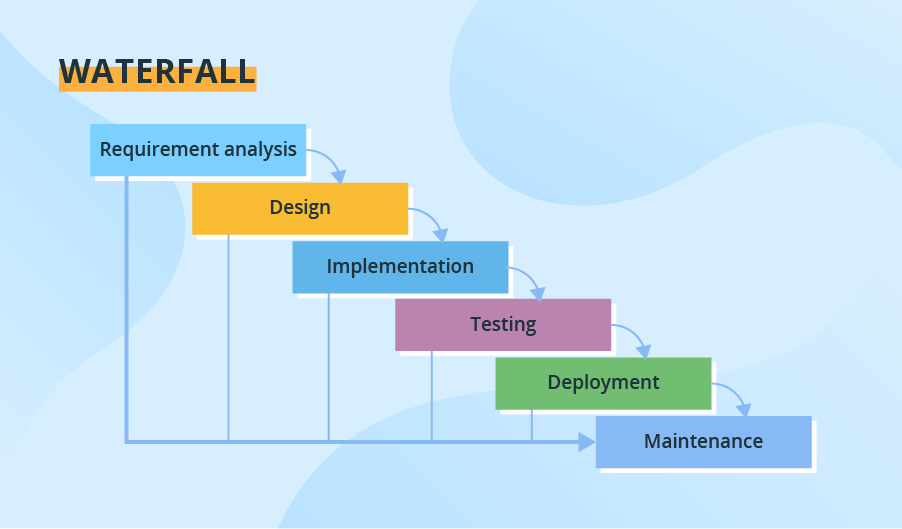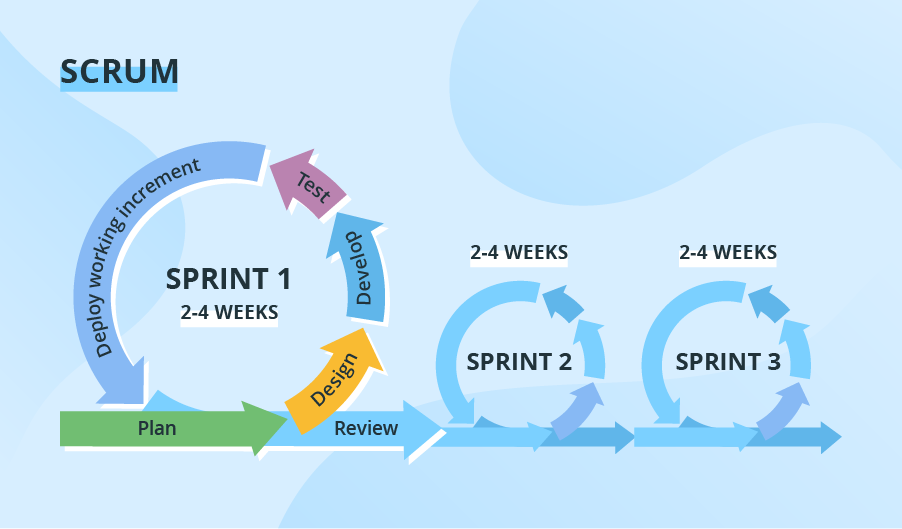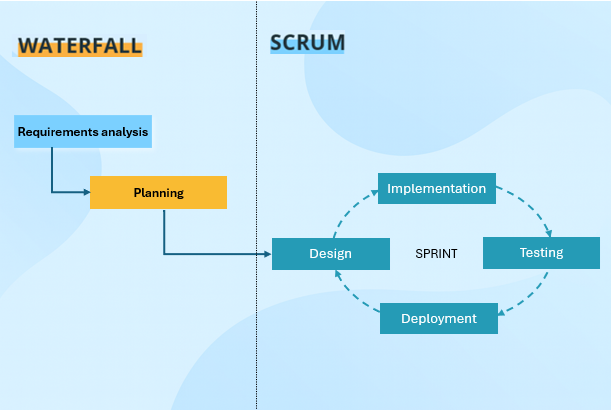Introduction to Project Management
General Definition of Project Management
Project management is the structured process of Initiating, Planning, Executing, Monitoring & Controlling, and Closing (PMI: Process Groups) to deliver projects within defined goals, timelines, and resources. It ensures that work is organized, risks are managed, and outcomes are delivered successfully. Because projects have a clear beginning and end, project management provides the roadmap that keeps teams aligned and accountable.
Project Management Methodology
Projects can be delivered using different methodology: Waterfall, Agile, Hybrid. The table below provides basic information about each method.
| Category | Waterfal | Agile (Scrum) | Hybrid |
|---|---|---|---|
Visuals |

|

|

|
Description |
A linear, step-by-step method where each phase (planning, design, implementation, testing, delivery) must be completed before moving to the next |
A flexible, iterative approach, breaking work into short sprints with frequent reviews and adjustments. |
Combines the structure of Waterfall with the flexibility of Agile. Some phases are strictly planned, while others adapt iteratively. |
Best For |
Projects with clear, stable requirements and little expected change. |
Projects where requirements evolve and teamwork, feedback, and adaptability are crucial. |
Projects that need a balance of control and adaptability, often in complex environments. |
Limitations |
Rigid, less flexible when changes are needed later in the process. |
Can feel less predictable for stakeholders who expect fixed timelines or detailed upfront plans. |
May add complexity in deciding which parts follow Waterfall vs. Agile. |
Project Management in TDM
The Data Mine, by design, emphasizes the Agile (Scrum) methodology for Corporate Partners projects delivery. This approach works well because requirements often evolve during the academic year, and collaboration with mentors, which is essential, happens during lecture sessions.
To better understand how this works in practice in TDM, the semester can be viewed as a series of 7 short sprints. Each sprint lasts two weeks and focuses on a specific stage (Setup, Development, Closure). Within each sprint, students take part in two 50-minute lectures with mentors and two 1-hour-50-minute lab sessions, both facilitated by the TA. The table below more specifically illustrates how Agile practices are applied in TDM to provide structure, ensure alignment, and support continuous collaboration throughout the semester.
TDM Semester |
Process Groups Mapping (PMI) |
TDM Activities |
Sprints 1–2 |
Initiating + Planning |
Project charter, NDAs, mentor/student introductions, Team Contract, tools setup (MS Teams, Kanban, GitHub, Anvil etc.), architecture, roles |
Sprints 3–6 |
Planning (Running Sprint 1st Lecture) |
TA, Mentors and Students during first lecture session of the sprint are planning the 2-week work cycle (sprint planning) . They set clear goals and choose tasks (sprint goals and backlog) to ensure everyone stays aligned on priorities and expectations. |
Executing |
Students put the plan into action, working together to meet the sprint goals (e.g., conducting research, building features, writing code, extracting data). TA facilitates short check-ins (Standups) where students share progress, discuss blockers, and collaborate to stay aligned. Students also use MS Teams and sometimes meet outside of class to coordinate work and keep things moving. |
|
Monitoring & controlling |
At the end of each sprint, during the lecture session, students present what they finished (Sprint Review). Mentors check the work, give feedback, and evaluate whether the goals were met. In the lab, students discuss what went well and what could be improved (Sprint Retrospective). To stay on track, students use a Kanban board to share updates and keep progress visible to everyone. |
|
Sprint 7 |
Closing |
Mid-Project presentation, documentation from all team members, semester team retrospective. |
Note: All terminology related to Agile (Scrum) is covered in Module 2
Sources (TBD)
-
The five traditional process groups explained. Project Management Academy. (2024, August 2). projectmanagementacademy.net/articles/five-traditional-process-groups